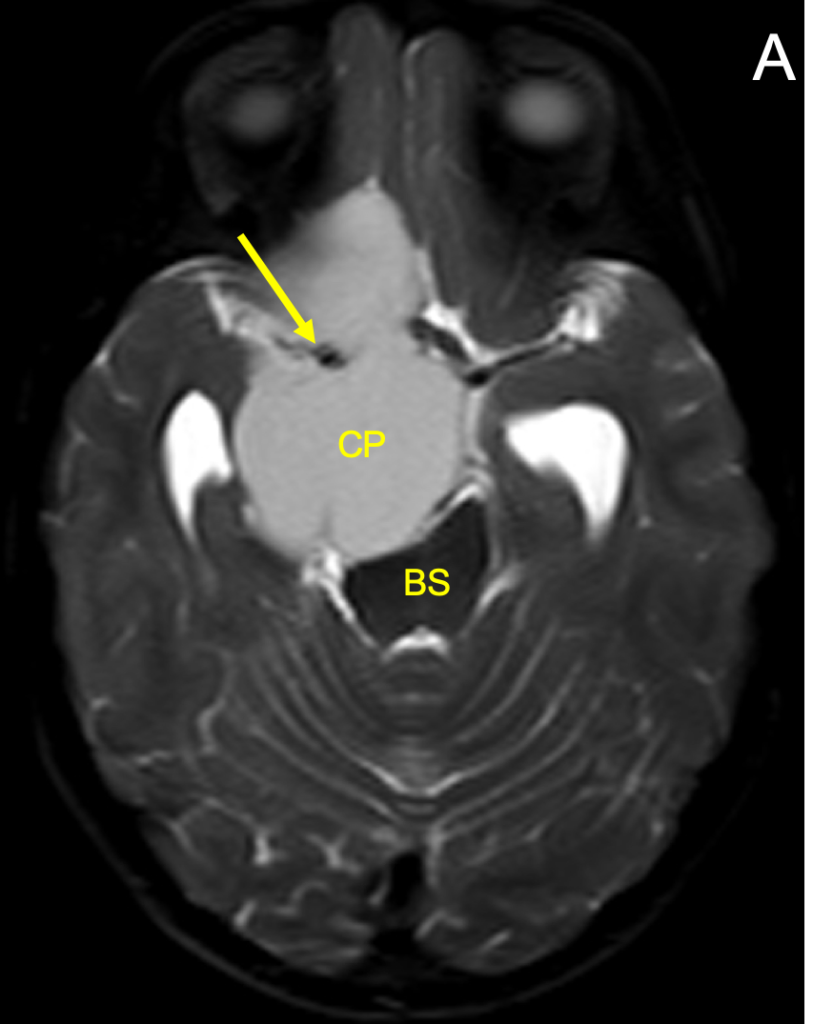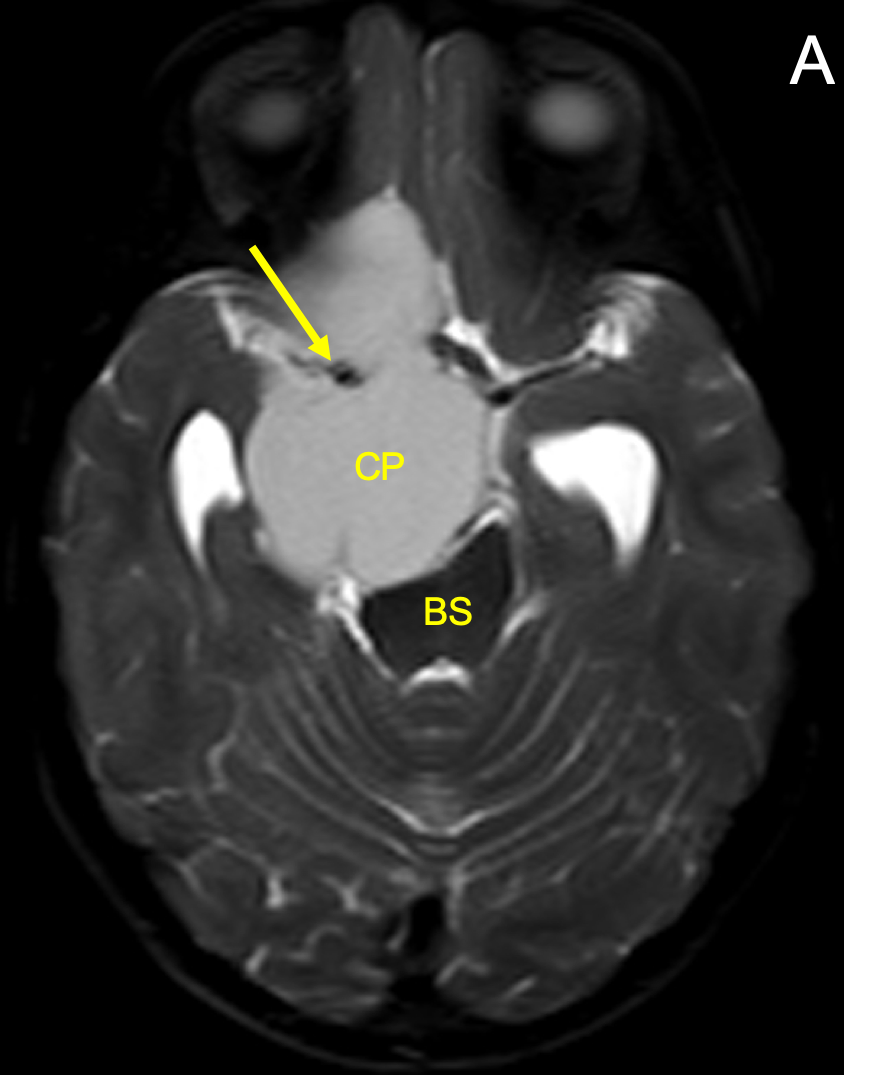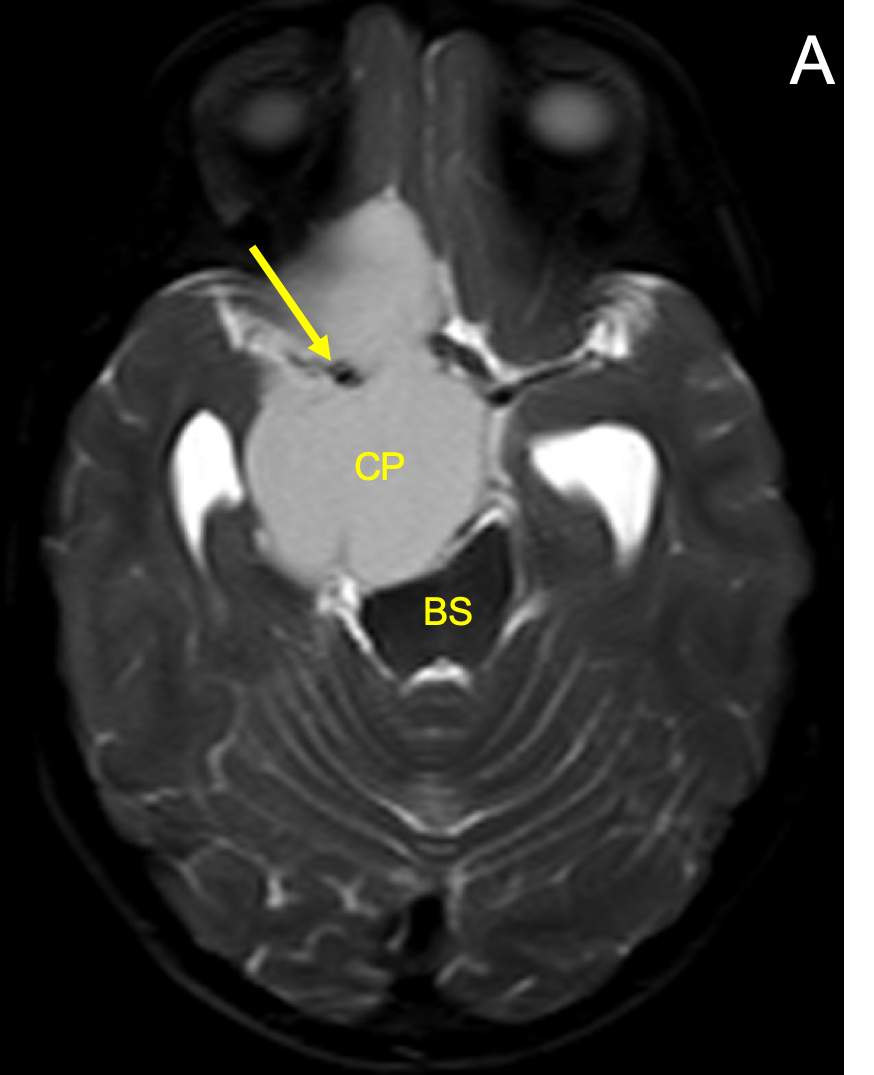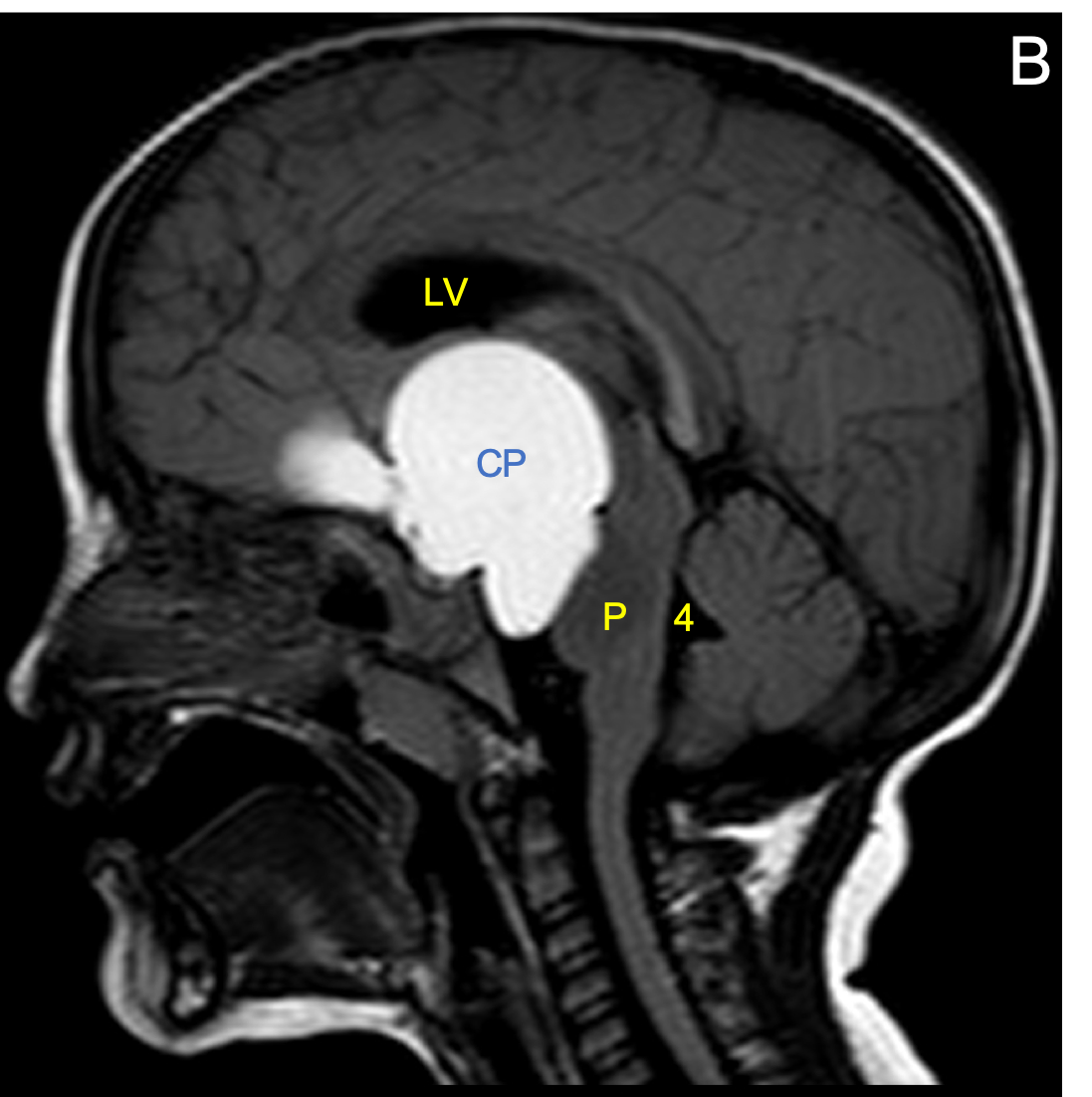Diagnosis Definition
-
Craniopharyngioma is a slow-growing, rare, histologically benign brain tumor affecting children between the ages of 5 and 14 and older adults
-
It is extra-axial, arises near the pituitary gland, and commonly contains solid and cystic components
-
Pressure on the pituitary gland and optic nerves produces headache, visual symptoms and endocrine abnormalities
-
The most common type, adamantinomatous, is seen predominantly in children
-
The tumor often contains single or multiple cysts filled with thick oily fluid rich in protein, blood products, and/or cholesterol, giving the so-called “motor oil” fluid appearance
Imaging Findings
-
Solid components are variable in intensity on T1 and T2 imaging and enhance vividly on T1 imaging with contrast
-
Cysts are variable in signal on T1 imaging due to high protein content and blood products, and variable but usually hyperintense on T2 imaging
-
Large tumors often compress the midbrain, causing obstructive hydrocephalus
Pearls
-
Appoximately 90% of craniopharyngiomas have calcifications, 90% have cysts, 90% enhance, and 90% are suprasellar
-
CT scanning is preferred over MRI for showing calcification in the tumor
References
- Plaza MJ, Borja MJ, Altman N, Saigal G. Review. Conventional and advanced MRI features of pediatric intracranial tumors: posterior fossa and suprasellar tumors. AJR 2013; 200:1115-1124
Case-based learning.
Perfected.
Learn from world renowned radiologists anytime, anywhere and practice on real, high-yield cases with Medality membership.
- 100+ Mastery Series video courses
- 4,000+ High-yield cases with fully scrollable DICOMs
- 500+ Expert case reviews
- Unlimited CME & CPD hours





